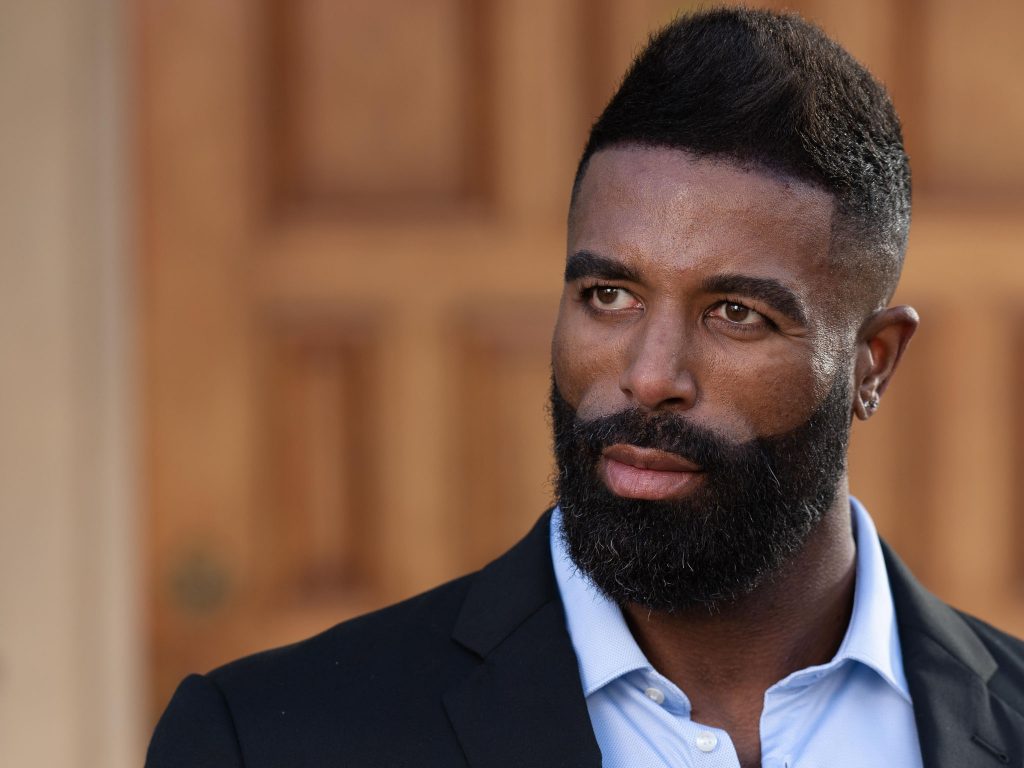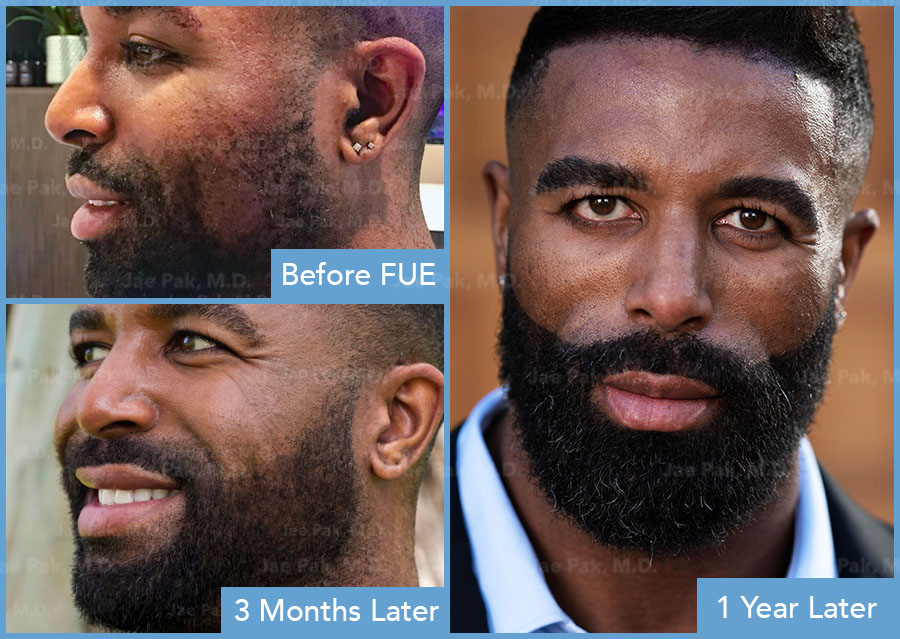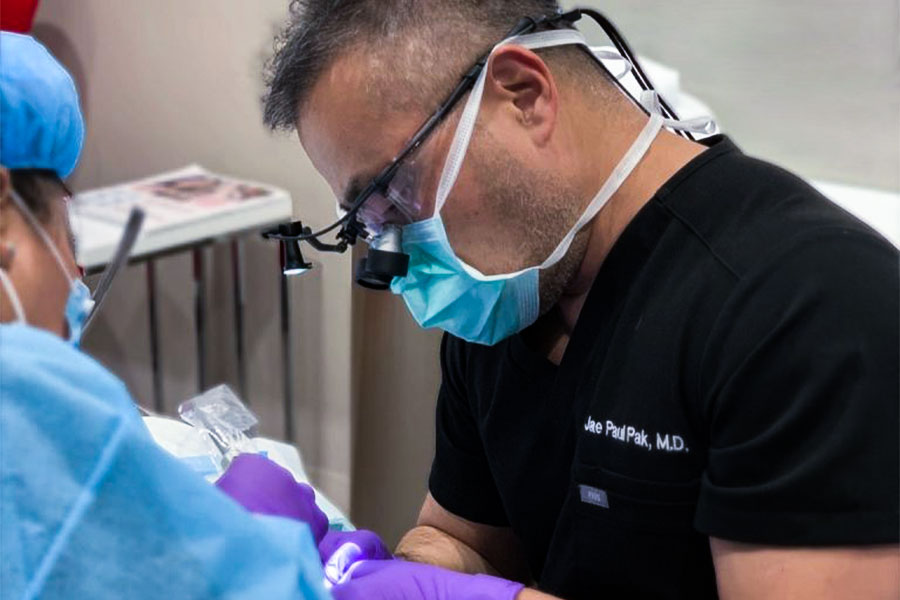Beard Implants | Procedure, Recovery, Cost, and Considerations

A full and voluminous beard has been a symbol of masculine strength for centuries.
Nowadays, beard culture has taken on a life of its own, with an entire industry and subsection of the internet dedicated to beard cultivation, grooming, and appreciation.
However, some gentlemen are not satisfied with the facial hair they see in the mirror. If natural supplements and treatments don’t do the trick to fill in those gaps, there is a surgical option on the table – beard transplants are totally viable and yield phenomenal results.
If you’ve never before heard of a beard transplant, the concept may sound strange. But given major leaps in technology in just a few short decades, the procedure is more popular than ever, with sky-high satisfaction rates for clients of all backgrounds.
Let’s take a closer look at what beard transplants involve, determine the best candidates for the procedure, and walk you through the process from front to back.
We’ll also give you some pointers for selecting a doctor and clinic to get you the best-looking, longest-lasting results possible.
Beard Transplant Basics
What are the must-know facts about beard transplants? Let’s begin with a definition.
A beard transplant is a procedure in which a surgeon harvests strong and healthy hair-bearing skin from a region of the body known as a donor area, then transplants these follicle units to areas of the beard in need of greater density, coverage, or shape.
The result is a beard that appears thicker, denser, and more aesthetically appealing overall. These aren’t drawn-on beard hairs or a semi-permanent solution – beard transplants are real, living hairs transferred to the spots where you need them most.
We’ll get deeper into the process of beard transplantation in the next section, but for now, be assured that these techniques are time-tested and proven by top doctors from around the world, with satisfactory outcomes for thousands of clients.
Why Beards Grow Differently
The truth is that 99% of beard growth (or lack thereof) results from genetics and the hormones that are released over time following the initial onset of puberty in one’s teenage years.
Just like we see with hair on the scalp, chest, and the rest of the body, there is really no predicting when, where, and how much hair will populate the face, even with a full understanding of someone’s family and ancestral background.
Facial hair gaps can happen anywhere – the mustache, sideburns, on the cheeks, or even on the jawline or neck.
While hormone therapy or natural treatments may help move things forward somewhat, beard growth is not likely to change after a certain age, usually during the early 20s.
Candidate Considerations
You may ask why a beard transplant is desirable for so many, but the answer is in plain sight!
Beards might serve an evolutionary purpose for protecting the face, but in modern times, they are more accurately seen as a sign of strength, status, or masculinity.
If a man or transitioning individual is lacking in the facial hair department, they may not feel entirely confident in his appearance. That alone is reason enough to undergo a beard transplant.
As far as real-world considerations go, candidates will have to think about the time required for surgery, what the recovery process looks like, how much the procedure will cost, and any risks that come into play when undertaking medical treatment of any kind.
There is also the possibility that a beard transplant is simply not the best course of action for an individual, given their hormonal profiles, medical backgrounds, problems with donor or recipient regions, or other issues related to autoimmune disorders or trauma to the skin.
That’s why it’s always advisable to take one’s time during the research and consultation process, rather than to rush into any type of hair transplant treatment and to explore all options before deciding on a single course of action.
Risks and Possible Side Effects
A beard transplant is considered a minimally invasive surgery, but clients take on some risk in the process like all medical procedures.
The most common side effect of beard transplant is some minor scarring in the donor area (resulting from harvesting suitable follicles to be implanted) and moderate itchiness or irritation on the recipient region during the recovery phase.
In more severe cases, infection in the affected areas may occur, and antibiotic treatment could be necessary to prevent further damage. Surgeons and patients can keep this risk to a minimum by following basic rules of hygiene and accountability for aftercare.
It is exceedingly rare for any serious side effects to occur from beard transplants, especially if clients are selective about the clinic they attend for the procedure.
Beard Transplant Process and Recovery

If you’re curious about the actual experience of getting a beard transplant, here’s what the process looks like from a first-person view.
Consultation and Pricing
While virtual consultations are possible, candidates for beard transplants are encouraged to sit down face-to-face with the surgeon for a comprehensive assessment of their skin, hair, medical history, and other key attributes.
During the consultation, the doctor and client will agree upon a strategy for harvesting hair from the donor area – either by means of strip surgery or FUE – then determine the placement and arrangement of the hair on the recipient region of the face.
These are essential steps for the surgeon to account for key details such as the number of grafts necessary for coverage, the size, and shape of those grafts for aesthetic input, plus any additional treatments or medications that may help the client achieve an optimal result.
Clients and doctors will also reach a reasonable price for the procedure, which can range anywhere from $3500 to $10,000, depending on various factors, such as:
- Scope of the surgery
- Number of grafts involved
- Method of extraction from the donor region
Day of Surgery
Clients may be advised to make dietary or lifestyle changes in the weeks leading up to surgery to maximize the strength and health of follicles and minimize risk. This could also involve taking medication or using over-the-counter treatments to supplement hair health.
On the day of the procedure, the client will have a final meeting with the doctor before the surgery begins. The client will be marked with a surgical pen to finalize the outlined goals of the procedure and ensure no mishandling.
As the client is made comfortable in a reclined position, they’re given the option to watch TV, listen to music, or just relax while the surgeon and technicians do their work.
There is no need for heavy sedatives when undergoing a beard transplant – just a small dose of local anesthetic is necessary to keep discomfort to a minimum. Most clients only report minor discomfort.
Harvesting hair for transplantation can either be done via FUT or FUE, with the main determinant being the number of grafts required to achieve desired coverage on the beard.
In total, the procedure should take no more than five hours, but clients should not plan to drive themselves home that day while medication is still in their system that can affect their driving ability..
Recovery and Aftercare
Recovering from a beard transplant doesn’t pose much of a problem at all.
Aside from some minor swelling and scabbing the first few days, clients are free to resume physical activity after the first week or so, provided they look after the affected areas and report any unusual developments.
Keep in mind that it may take nine to twelve months for new beard hair to take root and grow back, and many hairs will fall out and appear dormant in the interim.
Within a year, however, the beard hair will be back in full force, ready to be groomed and trimmed just like any other.
Your Beard Transplant Checklist
Seriously considering a beard transplant soon? Be sure to hit every item on this checklist to ensure a smooth and safe experience.
Find a Top-Tier Clinic and Surgeon
Beard transplants are serious business and should only be performed by highly trained experts in hair restoration. Avoid generalists, dermatologists, and standard plastic surgeons when browsing for a clinic to perform your operation.
Does your first-choice surgeon have a stellar track record and before & after photo gallery of beard transplant results? That’s typically a good sign!

Work with Your Restoration Specialist
Your consultation should be a collaborative process in which you discuss your long-term goals for your appearance and all the possible avenues to reach them.
Maybe you’re looking to do an all-in-one procedure including both beard and scalp hair transplant by FUE – it’s all possible when you side with the right people.
Ready for the Beard of Your Dreams?
While many men still prefer the close-shaved look, there’s something to be admired about a big and bold beard. It’s more culturally acceptable in professional environments and society in general. Beards are here to stay!
If you’re eager to take your beard to the next level with a proven procedure like transplantation, the time to act is now.
Open up a conversation with your hair restoration specialist and get ahead of the issue with a clear, comprehensive strategy.
Sources:
Beard Transplant FAQ | Mane Hair Restoration
Hair restoration surgery: challenges and solutions | NIH
Common Questions About Beard Transplant | Virginia Surgical Center